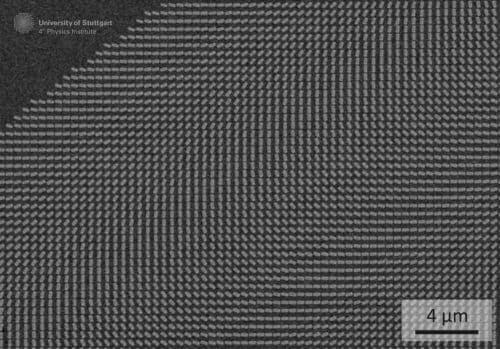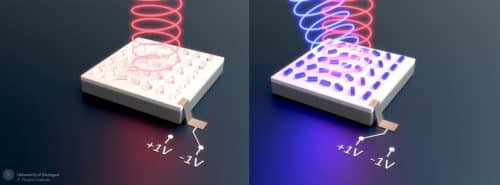Enabling video-like 3D holographics, the development in future can replace video conferences for providing a real-life virtual experience

In midst of the pandemic when most of us were confined to our homes with very little or no interaction with other people, online meetups and video conferences rescued us to maintain that longing ‘human-to-human’ connection.
As this form of virtual communication is now here to stay, an even more realistic model can be implemented such as holographic technology. But it hasn’t been fully explored yet; just limited to the realms of sci-fi movies.
Now thanks to researchers at the University of Stuttgart in Germany, that may soon change.
Based on electrically switchable plasmonic nanoantenna, this new approach to realise dynamic holographic displays enables 3D visuals to be displayed at a video rate having a resolution of 50 000 dpi (pixels per inch), which is 100x more than the best smartphone displays.
To achieve it, the researchers overcame the existing liquid-crystal limitation of a few micrometres pixel size by using electrically switchable plasmonic nanoantennas with dimensions of only a few hundred nanometres and made from conductive metallic polymers.

Replacing the previously discovered metasurfaces that generated static 3D holograms and were not switchable like common liquid crystal materials, the research team identified electrically conducting polymers as possible candidates for switchable plasmonics.
A process was then developed to nanostructure the metallic polymers by combining electron beam lithography and etching, thereby creating the plasmonic nanoantennas.
They generated an optical appearance that could be switched between being a shiny metal or a transparent material by applying a voltage between minus and plus one volt, which worked at video rates of 30 Hertz.
Despite being only a few tens of nanometres thick and less than 400 nanometres in size, the nanoantennas attain pixel densities of about 50.000 dpi, which is powerful than the much larger and thicker liquid crystals used in current state-of-the-art technology.

With work in progress for creating a hologram metasurface from the nanoantennas to deflect an infrared laser beam 10 degrees onto one side by applying a voltage, its applications can include development of highly sensitive LIDAR devices for autonomous vehicles and future smartphone cameras or optical sensors that could be zoomed from wide-angle, making the current four lenses functionality redundant.
In the future, the research team aims to address pixels individually so that the video rates of the dynamic hologram can be changed at will. Also, the optical properties of the polymer nanoantennas will need to be shifted into the visible wavelength range for incorporating moving holograms into AR/VR goggles and eventually onto smartphone screens and televisions.







